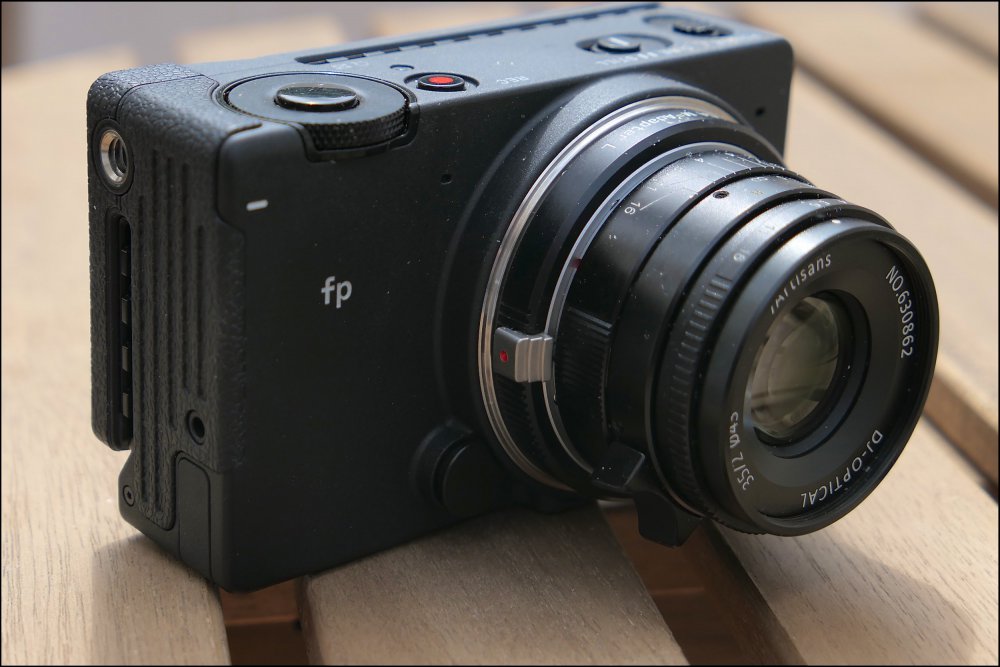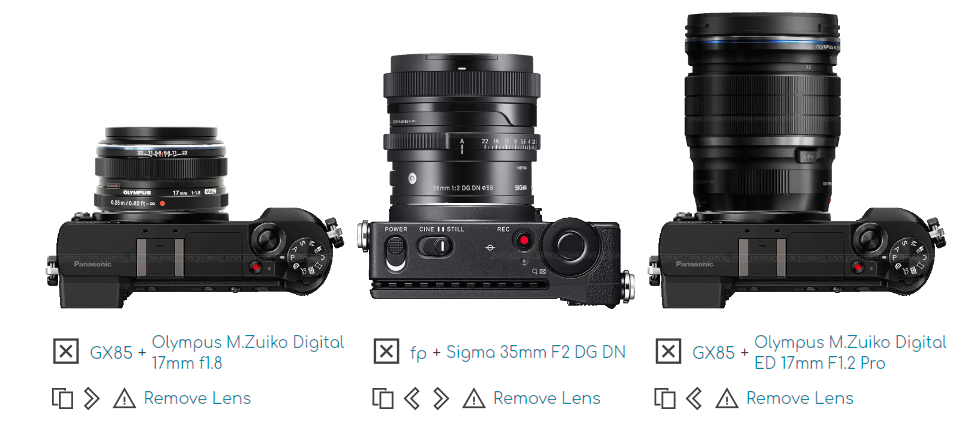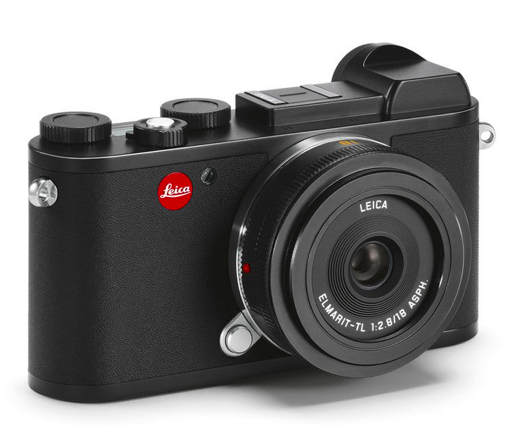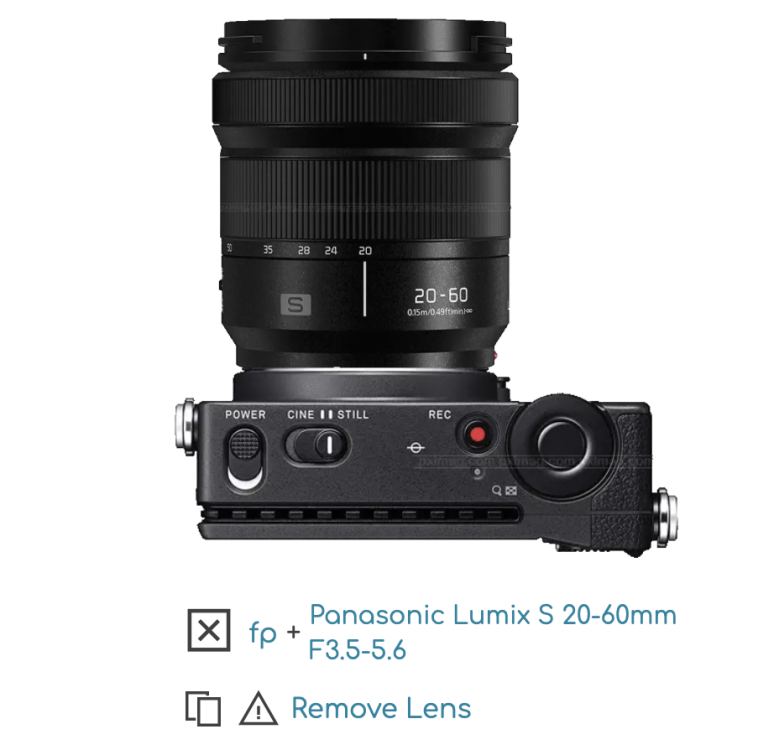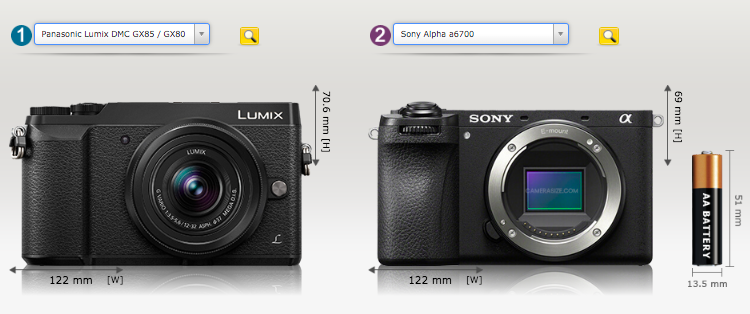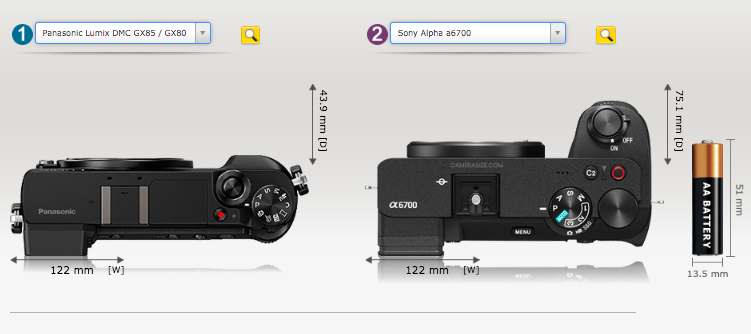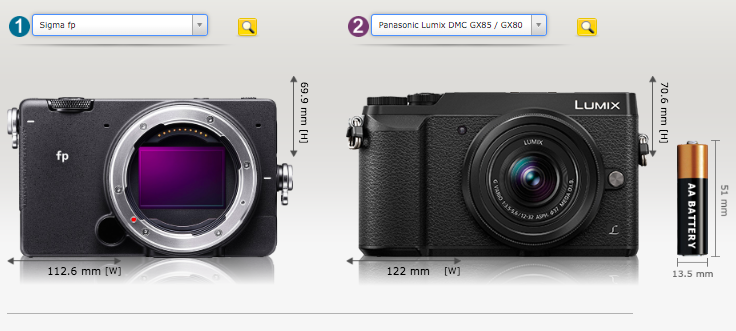Leaderboard
Popular Content
Showing content with the highest reputation on 03/05/2024 in all areas
-

Smallest MFT camera with usable AF-S, decent DR, and dual-ISO?
John Matthews reacted to kye for a topic
Not really. All I want is a GX85 with a modern sensor, so Dual ISO and higher DR. I don't need / want LOG, 10-bit, 422, ALL-I, RAW, PDAF, a flippy screen, dual card slots, 6K or more, mic-in, etc, etc, although if they came with no penalties then I wouldn't hate having them. In the real world though, they do come with penalties - huge ones (see rant at the end of this post). Absolutely. Yeah, this thread was more of a temperature check, just to make sure there wasn't something I'd forgotten, and to have another thorough think-through of it. I'm not sure I'd swap to another system right now even if it was free. The GX85 with 12-35mm still feels on the large side, so casually stretching to something 50% larger isn't a casual proposition at all. That's my feeling too. Panasonic has said there won't be more compact cameras, but has also said over and over that they're fully behind MFT, and having spent a long time developing the dual-gain PDAF sensor in the GH6 it would be pretty easy for them to capitalise on that investment by doing refreshes of the rest of the lineup. Hell, even if things trickled down and they released a GX camera with the sensor and processors from the GH5, that would be a good outcome for me. I'm actually deeply suspicious about the current size comparison between MFT, S35, and FF cameras, and how they're all a similar size and weight. The FF bodies with IBIS do tend to be heavier, but are the same size, and something smells fishy to me. If a sensor is smaller then it takes less power to run it, and it takes FAR less power to move it around for IBIS. The sensor is also a lot lighter, and the IBIS motors will be dramatically lighter. This means that if all else was equal the batteries should be smaller or last longer, and the internals should be smaller and lighter. I understand that the screen is independent of sensor size, as are lots of other things in the camera, but when combined with a smaller sensor with a lower resolution the processors should be smaller. The camera module from the iPhone is practically microscopic. BUT, that's not what we're seeing. I suspect it's a combination of lowered IBIS performance (the motors not being able to move as fast or as far, but no technician out there will get their shit together and actually make a test setup for this), combined with the manufacturers just not trying, which I think is quite sad. What this means in practice though is that it should be easily possible for a GX sized camera with modern components and design to offer a serious challenge to the specs of the larger S35 and FF cameras. Now I've moved to zooms, I seem to be swimming against the prevailing winds of the camera market once again. I want MFT zooms to be F2.8 or slower, a standard 3x (~24-70mm) or 10x zoom ratio, and as small as possible. I'd be happy if the attempts to make them smaller meant that they were 12MP or less in resolution. Instead, the market has put making the fastest and sharpest lenses known to man as the first priority, relegating size to third priority (there is no second priority), and because everyone is shooting wide open they've managed to get the whole industry to basically stop discussing anything else except 150fps animal-eye-detect focus performance. When I think about a FF camera with an F2.8 lens I think of it having too shallow DoF for my compositions, and by the time I stop it down I now need the second base ISO just to give it a normal exposure after the sun has gone down. It's been a long journey for me, but now MFT seems to be the sweet spot of DoF and exposure to create the right aesthetic in a sensible amount of light, which makes the AF performance far less critical, and when combined with a 4K sensor the data rates aren't stratospheric, the lenses can be budget friendly, you can do it on affordable SD cards internally, making the whole camera package smaller. ....not to mention you don't need a supercomputer to edit the footage. The "better" cameras on the market seem to have "improved" every aspect, but the challenge is that when you "improve" one aspect you make all the others far worse, in a never-ending game of "one step forward, six steps back, and how will you be paying for this today sir?".1 point -
I think the closest that you're going to get with that will be the Sigma contemporary range. They are behemoths compared to what you can get in MFT but, actually, when you line it up against an MFT package of actual equivalence (or slightly less in this case) then the story changes. Its just that with MFT you have the option and thus far in L mount then you don't. Unless.... You don't mind sacrificing a daft amount of money and going APS-C and picking up the Leica range that they made for the TL and CL which are very compact indeed. Leica have abandoned APS-C and Panasonic seem content to sit either side of it with their MFT and L mount so it might be a place that Sigma could carve a niche for themselves with an APS-C body, particularly as they have an excellent set of fast primes and a zoom for it. With the trials and tribulations of them trying and thus far failing to make a full frame Foveon, it could well be that it would find a home for an interim APS-C version in a rehoused Fp. Realistically, though, the only current way to get pancake-ish full frame in L mount is to go for the manual focus route of using M mount on them like I've done on mine here with a 35mm f2. As @MrSMW has just posted, the E mount system is currently better served with compact FF lenses particularly in regard to 3rd party manufacturers like Samyang. The closed shop nature of the L mount alliance (in terms of electronic lenses at least) is definitely a hindrance in that regard.1 point
-

Smallest MFT camera with usable AF-S, decent DR, and dual-ISO?
John Matthews reacted to MrSMW for a topic
That would be interesting as they stated officially there would be no more small (or compact anyway) cameras. But there are indeed some very valid FF body/lens combos now that are not exactly massive and bigger/longer lenses can be compensated for with cropping, ie, larger sensors and AI etc... Sony A7RV for instance is basically the same weight as my S5ii and Z6ii, but smaller and with 2.5x the sensor size. They can be had for a little over 3k euros from reputable dealers with warranty used in 'like new' condition and when you compare it size-wise with say the OM-1 M4/3 camera, it's spec and real world capability are just nuts. With E Mount, there are also the largest range of smaller lenses from any other FF manufacturer. I went Z6ii with Tamron 70-180mm f2.8 myself as the best compromise of cost vs size/weight vs outright ability for my needs, but could easily have made a case for the A7RV with the Tamron 28-75mm f2.8 which in APSC mode produces a more detailed 26mp file at an equivalent focal length around 40-110mm so a bit shorter, but I could make that work because I could crop a bit harder still and really, only I would know. M4/3 is up against it IMO though. Always has been. Ever more so. It's advantage was size & weight (or lack of) and with older stuff, that can still be the case, but the move forward that many have needed on the tech side, have come at the cost of it's primary appeal. APSC is still a good shout though with Fuji and Sony leading the way. Canon I don't think have the lenses and no one else is really in the game. Sometimes, a clean sheet is the answer, but for most of us, pro or otherwise, we can't easily do that.1 point -

Smallest MFT camera with usable AF-S, decent DR, and dual-ISO?
kye reacted to John Matthews for a topic
Invariably, the conversation goes to FF. Personally, I thought about that Sigma FP and Panasonic 28-200 (with IS). That combo seems super versatile now. Size-wise, the FP is the size of a mid-range MFT camera. The equivalent of the Panasonic lens would be a 14-100 f/2-2.8 zoom, which would be incredible. The package would come in at 830-ish grams. I've always thought this: if L-mount comes out with smaller pancakes and a few reasonably priced very small bodies, MFT would be on a path to obsolete. Until then, MFT cameras will continue to make decent strides in terms of features and at least on the used market, their prices continue to rise- the true indicator of a camera's value. On a side note, I'd wait because there have been reports on a small Panasonic camera is in the works. My bet is that it will have PDAF and some other decent features. This could be more than a year away though.1 point -
@kye we've discussed this a bit in the past regarding selling everything and moving to a new system and normally I would be against it... I still consider my 5D3 with ML Raw as my main camera... but if my main camera was a m4/3, I might consider it. Unfortunately, m4/3 as a small camera system is a thing of the past. Any new cameras will be as big as Panasonic's FF offerings, so if you want any of the upgrades you mentioned, the only option is to change systems or deal with the bigger m4/3 bodies. Sony could be a great option, as @BTM_Pix mentioned because you can use some of your current manual focus m4/3 lenses with a simple adapter while you decide what lenses you'd like to invest in. Also, eventually there will be no m4/3... it may not be for a few years, but the writing is on the wall... so your Voigtlander lenses will become VERY expensive paper weights. Sell them while you still can. Then again, if you are happy with the images you are getting with what you already own, then there's no reason to upgrade. But if you want some of the features you mentioned, the only options are a change in systems... hell you can have a lot, if not all including size, by going full frame. In the end, after selling off/trading what you have, you could probably end up with more money.1 point
-
“All I want is the perfect camera”. I hear you. We should add the word ‘system’ after the word camera because there is too much emphasis on the body, but if the glass is not there… The best F1 car on normal road tires is a nicely painted tin can. I wish M4/3 could work for me as it’s primary appeal is the size & weight but the reality is the kit I would want is the bigger stuff, the OM-1 or G9ii and the 10-25 + 25-50 zooms and we’re talking as big as FF with a number of performance deficiencies in comparison. Discounting MF, at FF we have everything I want and need, but at the most weight, size and cost. APSC still seems to be the sweet spot for me, all factors considered and I am pretty sure that with a clean sheet and a reasonable budget for 2024 (I have neither) then I would go back to Fuji who have come good since I left the system at the end of 2020. 2021 the XT4 was the new boy and was just about where I needed the body side of the equation and they already had the glass and since then, Tamron joined the party. Fxxking Cxvid. If that arsehole had not come along, I would still be a Fuji dude. At heart, I think I still am.1 point
-

Smallest MFT camera with usable AF-S, decent DR, and dual-ISO?
John Matthews reacted to BTM_Pix for a topic
The new 28-200 is roughly the same size and weight as the 20-60mm so it is a lot more balanced to the Fp. It has a a great range and having the OIS offers an interesting proposition of it turning the Fp into a very compact Cinecorder. However, it is very, very slow on the long end though, particularly for only 200mm. Not that ultra shallow depth of field is the be all and end all of course but f7.1 is a bit of a stretch. Of course the swing to that particular roundabout is that you don't have to worry so much about the camera not having sentient AF !1 point -

Smallest MFT camera with usable AF-S, decent DR, and dual-ISO?
Marcio Kabke Pinheiro reacted to BTM_Pix for a topic
I think I droned out these exact same thoughts in the G9ii or some similar thread about MFT but I'll repeat them anyway 🙂 In terms of a new camera, I honestly think its time to give up on Panasonic producing that specced up GX85 that everybody knows they could make if they wanted to. In the absence of the "new" Olympus not doing anything to move the MFT story along either in terms of a compact then something like the A6700 is that camera now. As well as being a larger sensor, it ticks every box of what is being asked for in terms of being dual native ISO, 10bit 4:2:2 internal, IBIS, class leading AF, LOG and a very good out of the box profile in S-Cinetone. Very flexible mount in that it can even take your MFT manual focus lenses and has very good options like the Meike EF>E which will give you full AF of Canon lenses with the bonus of variable ND. In terms of native lenses, there are a lot more E mount options now compared to when, say, the GX85 launched and it is seeing more releases every month unlike MFT which is slowing now. The writing was on the wall when Sigma expanded their compact f1.4 prime lineup with the 56mm and didn't release an MFT version. Their two compact contemporary f2.8 zoom lenses are also not available in MFT of course. Size wise there isn't anything in it from the front and the GX85 is actually a fraction bigger. The A6700 is deeper but most of that is attributable to the chunky grip which, to me, is no bad thing as the GX85 is not chunky enough for me and the A6700's incorporates a dial too. Price wise, it is a lot more expensive than the GX85 was on launch but so is everything else now and it is significantly cheaper than Panasonic's latest MFT camera, the G9ii. The virtual shark jumping price of the G9ii makes me suspect that even if Panasonic did produce a new specced up GX85 that it would likely be at least as expensive as the A6700. If you want to be closer spiritually to a combo of the GX85 and OG Pocket then, if you embrace the quirks, the Sigma Fp is well worth a consideration particularly as the used prices are dropping. Personally, I'd add the EVF-11 as it is so much nicer to shoot with whilst at the same time you can remover it and leave it in your pocket if you need to go smaller. The tilt action of the EVF enables you to press the camera to your chest to offer a lot more stability when handholding. That is important because you lose IBIS of course but you gain RAW and, as with the AF of the Fp, the internal 8 bit 4K is far more serviceable than people give it credit for and if you only need HD then its 12 bit internal. As with the EVF, the modularity means that if you want more capability in terms of bit depth then you can add it easily and discreetly. The Fp has largely been forgotten/written off by an awful lot of people around the world but in Japan, in particular, there is some absolutely lovely imagery being uploaded to YouTube every week from it.1 point -

Smallest MFT camera with usable AF-S, decent DR, and dual-ISO?
John Matthews reacted to kye for a topic
Well, that rules them out, which is unfortunate. Yeah, it has to be MFT. Not only to share my existing lenses with the GX85, but also because the FF lenses are gargantuan in comparison and pretty sparse really. Not only would it be too large (and "Smallest" is literally the first word in the title of this thread) but compatibility is another whole thing that just isn't a factor when sticking to a single lens system. Yeah, it's just the frustrations of when I hit its limitations, which when I'm travelling is a multiple-times-per-day sort of thing, and is often in a that-would-have-been-the-killer-shot-from-this-location-but-the-camera-couldn't-do-it sort of way. I'm fully aware that I want a camera that can do a wide range of things very very well, but you can't fault someone for trying to improve things. The thing I find fascinating is that even if I had a million-dollar budget for a setup, I still couldn't get what I want.1 point

